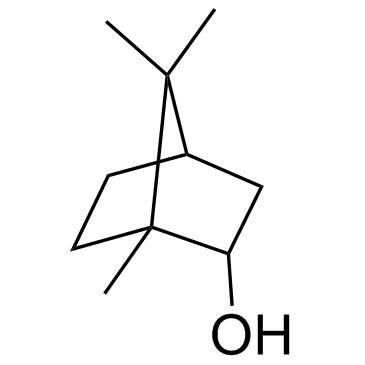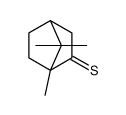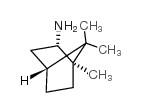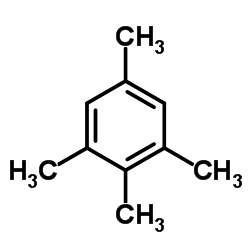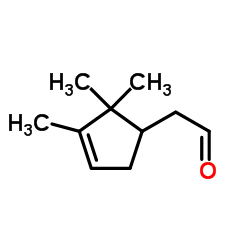CHEMICAL IDENTIFICATION
-
RTECS NUMBER :
-
EX1225000
-
CHEMICAL NAME :
-
Camphor
-
CAS REGISTRY NUMBER :
-
76-22-2
-
BEILSTEIN REFERENCE NO. :
-
3196099
-
LAST UPDATED :
-
199712
-
DATA ITEMS CITED :
-
50
-
MOLECULAR FORMULA :
-
C10-H16-O
-
MOLECULAR WEIGHT :
-
152.26
-
WISWESSER LINE NOTATION :
-
L55 A CVTJ A1 A1 B1
HEALTH HAZARD DATA
ACUTE TOXICITY DATA
-
TYPE OF TEST :
-
LDLo - Lowest published lethal dose
-
ROUTE OF EXPOSURE :
-
Oral
-
SPECIES OBSERVED :
-
Human - infant
-
DOSE/DURATION :
-
70 mg/kg
-
TOXIC EFFECTS :
-
Sense Organs and Special Senses (Eye) - mydriasis (pupillary dilation) Behavioral - convulsions or effect on seizure threshold Gastrointestinal - changes in structure or function of salivary glands
-
TYPE OF TEST :
-
TDLo - Lowest published toxic dose
-
ROUTE OF EXPOSURE :
-
Oral
-
SPECIES OBSERVED :
-
Human - child
-
DOSE/DURATION :
-
51 mg/kg
-
TOXIC EFFECTS :
-
Behavioral - somnolence (general depressed activity) Behavioral - convulsions or effect on seizure threshold
-
TYPE OF TEST :
-
LDLo - Lowest published lethal dose
-
ROUTE OF EXPOSURE :
-
Unreported
-
SPECIES OBSERVED :
-
Human - child
-
DOSE/DURATION :
-
100 mg/kg
-
TOXIC EFFECTS :
-
Details of toxic effects not reported other than lethal dose value
-
TYPE OF TEST :
-
LDLo - Lowest published lethal dose
-
ROUTE OF EXPOSURE :
-
Unreported
-
SPECIES OBSERVED :
-
Human - man
-
DOSE/DURATION :
-
29 mg/kg
-
TOXIC EFFECTS :
-
Details of toxic effects not reported other than lethal dose value
-
TYPE OF TEST :
-
LDLo - Lowest published lethal dose
-
ROUTE OF EXPOSURE :
-
Intraperitoneal
-
SPECIES OBSERVED :
-
Rodent - rat
-
DOSE/DURATION :
-
900 mg/kg
-
TOXIC EFFECTS :
-
Behavioral - convulsions or effect on seizure threshold
-
TYPE OF TEST :
-
LD50 - Lethal dose, 50 percent kill
-
ROUTE OF EXPOSURE :
-
Subcutaneous
-
SPECIES OBSERVED :
-
Rodent - rat
-
DOSE/DURATION :
-
70 mg/kg
-
TOXIC EFFECTS :
-
Details of toxic effects not reported other than lethal dose value
-
TYPE OF TEST :
-
LD50 - Lethal dose, 50 percent kill
-
ROUTE OF EXPOSURE :
-
Oral
-
SPECIES OBSERVED :
-
Rodent - mouse
-
DOSE/DURATION :
-
1310 mg/kg
-
TOXIC EFFECTS :
-
Details of toxic effects not reported other than lethal dose value
-
TYPE OF TEST :
-
LCLo - Lowest published lethal concentration
-
ROUTE OF EXPOSURE :
-
Inhalation
-
SPECIES OBSERVED :
-
Rodent - mouse
-
DOSE/DURATION :
-
400 mg/m3/3H
-
TOXIC EFFECTS :
-
Behavioral - muscle contraction or spasticity
-
TYPE OF TEST :
-
LD50 - Lethal dose, 50 percent kill
-
ROUTE OF EXPOSURE :
-
Intraperitoneal
-
SPECIES OBSERVED :
-
Rodent - mouse
-
DOSE/DURATION :
-
3 gm/kg
-
TOXIC EFFECTS :
-
Behavioral - convulsions or effect on seizure threshold Behavioral - changes in motor activity (specific assay) Behavioral - rigidity (including catalepsy)
-
TYPE OF TEST :
-
LDLo - Lowest published lethal dose
-
ROUTE OF EXPOSURE :
-
Subcutaneous
-
SPECIES OBSERVED :
-
Rodent - mouse
-
DOSE/DURATION :
-
200 mg/kg
-
TOXIC EFFECTS :
-
Behavioral - excitement
-
TYPE OF TEST :
-
LDLo - Lowest published lethal dose
-
ROUTE OF EXPOSURE :
-
Oral
-
SPECIES OBSERVED :
-
Mammal - dog
-
DOSE/DURATION :
-
800 mg/kg
-
TOXIC EFFECTS :
-
Details of toxic effects not reported other than lethal dose value
-
TYPE OF TEST :
-
LDLo - Lowest published lethal dose
-
ROUTE OF EXPOSURE :
-
Intraperitoneal
-
SPECIES OBSERVED :
-
Mammal - cat
-
DOSE/DURATION :
-
400 mg/kg
-
TOXIC EFFECTS :
-
Details of toxic effects not reported other than lethal dose value
-
TYPE OF TEST :
-
LDLo - Lowest published lethal dose
-
ROUTE OF EXPOSURE :
-
Oral
-
SPECIES OBSERVED :
-
Rodent - rabbit
-
DOSE/DURATION :
-
2 gm/kg
-
TOXIC EFFECTS :
-
Behavioral - convulsions or effect on seizure threshold Behavioral - changes in motor activity (specific assay) Behavioral - rigidity (including catalepsy)
-
TYPE OF TEST :
-
LDLo - Lowest published lethal dose
-
ROUTE OF EXPOSURE :
-
Subcutaneous
-
SPECIES OBSERVED :
-
Amphibian - frog
-
DOSE/DURATION :
-
240 mg/kg
-
TOXIC EFFECTS :
-
Peripheral Nerve and Sensation - spastic paralysis with or without sensory change
-
TYPE OF TEST :
-
TCLo - Lowest published toxic concentration
-
ROUTE OF EXPOSURE :
-
Inhalation
-
SPECIES OBSERVED :
-
Rodent - mouse
-
DOSE/DURATION :
-
210 mg/m3/3H/7W-I
-
TOXIC EFFECTS :
-
Lungs, Thorax, or Respiration - emphysema
-
TYPE OF TEST :
-
TCLo - Lowest published toxic concentration
-
ROUTE OF EXPOSURE :
-
Inhalation
-
SPECIES OBSERVED :
-
Rodent - rabbit
-
DOSE/DURATION :
-
33 mg/m3/3H/7W-I
-
TOXIC EFFECTS :
-
Brain and Coverings - other degenerative changes Cardiac - other changes Lungs, Thorax, or Respiration - emphysema
MUTATION DATA
-
TEST SYSTEM :
-
Rodent - mouse
-
REFERENCE :
-
MUREAV Mutation Research. (Elsevier Science Pub. B.V., POB 211, 1000 AE Amsterdam, Netherlands) V.1- 1964- Volume(issue)/page/year: 224,157,1989 *** REVIEWS *** ACGIH TLV-Not classifiable as a human carcinogen DTLVS* The Threshold Limit Values (TLVs) and Biological Exposure Indices (BEIs) booklet issues by American Conference of Governmental Industrial Hygienists (ACGIH), Cincinnati, OH, 1996 Volume(issue)/page/year: TLV/BEI,1997 ACGIH TLV-STEL 19 mg/m3 (3 ppm) DTLVS* The Threshold Limit Values (TLVs) and Biological Exposure Indices (BEIs) booklet issues by American Conference of Governmental Industrial Hygienists (ACGIH), Cincinnati, OH, 1996 Volume(issue)/page/year: TLV/BEI,1997 ACGIH TLV-TWA 12 mg/m3 (2 ppm) DTLVS* The Threshold Limit Values (TLVs) and Biological Exposure Indices (BEIs) booklet issues by American Conference of Governmental Industrial Hygienists (ACGIH), Cincinnati, OH, 1996 Volume(issue)/page/year: TLV/BEI,1997 TOXICOLOGY REVIEW JRPMAP Journal of Reproductive Medicine. (2 Jacklynn Ct., St. Louis, MO 63132) V.3- 1969- Volume(issue)/page/year: 12,27,1974 TOXICOLOGY REVIEW NTIS** National Technical Information Service. (Springfield, VA 22161) Formerly U.S. Clearinghouse for Scientific & Technical Information. Volume(issue)/page/year: PB293-503 *** U.S. STANDARDS AND REGULATIONS *** EPA FIFRA 1988 PESTICIDE SUBJECT TO REGISTRATION OR RE-REGISTRATION FEREAC Federal Register. (U.S. Government Printing Office, Supt. of Documents, Washington, DC 20402) V.1- 1936- Volume(issue)/page/year: 54,7740,1989 MSHA STANDARD-air:TWA 2 ppm (12 mg/m3) DTLVS* The Threshold Limit Values (TLVs) and Biological Exposure Indices (BEIs) booklet issues by American Conference of Governmental Industrial Hygienists (ACGIH), Cincinnati, OH, 1996 Volume(issue)/page/year: 3,37,1971 OSHA PEL (Gen Indu):8H TWA 2 mg/m3 CFRGBR Code of Federal Regulations. (U.S. Government Printing Office, Supt. of Documents, Washington, DC 20402) Volume(issue)/page/year: 29,1910.1000,1994 OSHA PEL (Construc):8H TWA 2 mg/m3 CFRGBR Code of Federal Regulations. (U.S. Government Printing Office, Supt. of Documents, Washington, DC 20402) Volume(issue)/page/year: 29,1926.55,1994 OSHA PEL (Shipyard):8H TWA 2 mg/m3 CFRGBR Code of Federal Regulations. (U.S. Government Printing Office, Supt. of Documents, Washington, DC 20402) Volume(issue)/page/year: 29,1915.1000,1993 OSHA PEL (Fed Cont):8H TWA 2 mg/m3 CFRGBR Code of Federal Regulations. (U.S. Government Printing Office, Supt. of Documents, Washington, DC 20402) Volume(issue)/page/year: 41,50-204.50,1994 *** OCCUPATIONAL EXPOSURE LIMITS *** OEL-AUSTRALIA:TWA 2 ppm (12 mg/m3);STEL 3 ppm (18 mg/m3) JAN 1993 OEL-AUSTRIA:TWA 2 ppm (13 mg/m3) JAN 1993 OEL-BELGIUM:TWA 2 ppm (12 mg/m3);STEL 3 ppm (19 mg/m3) JAN 1993 OEL-DENMARK:TWA 2 ppm (12 mg/m3) JAN 1993 OEL-FINLAND:TWA 0.3 ppm (2 mg/m3);STEL 0.9 ppm (6 mg/m3) JAN 1993 OEL-FRANCE:TWA 2 ppm (12 mg/m3) JAN 1993 OEL-GERMANY:TWA 2 ppm (13 mg/m3) JAN 1993 OEL-THE NETHERLANDS:TWA 2 ppm (12 mg/m3) JAN 1993 OEL-THE PHILIPPINES:TWA 2 ppm (12 mg/m3) JAN 1993 OEL-RUSSIA:STEL 3 mg/m3 JAN 1993 OEL-SWITZERLAND:TWA 2 ppm (13 mg/m3) JAN 1993 OEL-UNITED KINGDOM:TWA 2 ppm (12 mg/m3);STEL 3 ppm (18 mg/m3) JAN 1993 OEL IN BULGARIA, COLOMBIA, JORDAN, KOREA check ACGIH TLV OEL IN NEW ZEALAND, SINGAPORE, VIETNAM check ACGIH TLV *** NIOSH STANDARDS DEVELOPMENT AND SURVEILLANCE DATA *** NIOSH RECOMMENDED EXPOSURE LEVEL (REL) : NIOSH REL TO CAMPHOR, synthetic-air:10H TWA 2 mg/m3 REFERENCE : NIOSH* National Institute for Occupational Safety and Health, U.S. Dept. of Health, Education, and Welfare, Reports and Memoranda. Volume(issue)/page/year: DHHS #92-100,1992 NIOSH OCCUPATIONAL EXPOSURE SURVEY DATA : NOHS - National Occupational Hazard Survey (1974) NOHS Hazard Code - 15800 No. of Facilities: 8356 (estimated) No. of Industries: 68 No. of Occupations: 63 No. of Employees: 95578 (estimated) NOES - National Occupational Exposure Survey (1983) NOES Hazard Code - X1190 No. of Facilities: 25 (estimated) No. of Industries: 1 No. of Occupations: 1 No. of Employees: 427 (estimated) No. of Female Employees: 176 (estimated) NOES - National Occupational Exposure Survey (1983) NOES Hazard Code - 15800 No. of Facilities: 9166 (estimated) No. of Industries: 101 No. of Occupations: 87 No. of Employees: 153554 (estimated) No. of Female Employees: 53187 (estimated)
|






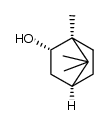


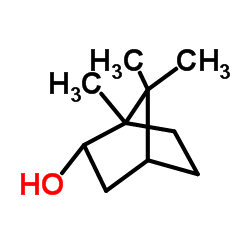
![()-1,7,7-trimethylbicyclo[2.2.1]heptan-2-one oxime structure](https://image.chemsrc.com/caspic/300/18674-50-5.png)
![4',7',7'-trimethylspiro[1,3-dithiolane-2,3'-bicyclo[2.2.1]heptane] structure](https://image.chemsrc.com/caspic/379/6787-91-3.png)

